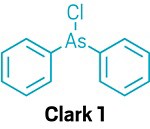
Credit: Courtesy of Jacek Bełdowski
Researchers prepare to launch an autonomous underwater vehicle as they investigate a site in the Baltic Sea where chemical weapons were disposed of after World War II.
Mustard gas and other agents in chemical weapons dumped after World War II are polluting the Baltic Sea’s underwater sediment.
Researchers found traces of arsenic-containing agents and mustard gas products in sediment and fish near three weapon disposal sites.

These agents “can actually contaminate the Baltic ecosystem, which is kind of fragile,” says Jacek Bełdowski, a professor at the Institute of Oceanology at the Polish Academy of Sciences and one of the coauthors of the study (Mar. Environ. Res. 2020, DOI: 10.1016/j.marenvres.2020.105112).

The warfare agents came from the German Army in WWII. After Germany’s defeat, the Soviet Union dumped the captured chemical weapons in the Baltic Sea. The British and Americans did the same in the Skagerrak strait, between Norway and Sweden to the north and Denmark to the south. At the time, this disposal method was deemed less hazardous than burning the materials.
The authors of the study say the Soviets jettisoned at least 50,000 metric tons (t) of German weapons into the Baltic Sea, some 15,000 t of which contained chemical agents. Previous reports concluded that most of these munitions probably had sunk into mud on the seafloor and were largely harmless.
Bełdowski and his colleagues took a closer look. They developed new methods to analyze for chemical agents in seabed sediment, as well as in fish and mussel tissue. They used underwater drones and towed sonar scanners around three dump sites in the Baltic Sea and collected sediment samples and fish in the areas.
The most abundant chemical agent they found was sulfur mustard, used in aircraft bombs and artillery shells. They also detected arsenic-containing agents like clark 1 (diphenylchloroarsine) and adamsite (diphenylaminechlorarsine), as well as hydrogen cyanide and chemicals used in tear gas. These substances degrade when released to seafloor sediments, and some of the breakdown products are toxic, the authors found.
They frequently detected pollution some 250 m from the munition dump sites, but in some cases the contaminated area extended to 1 km, depending on currents at the sea bottom.
Susan L. Smith, author of the book Toxic Exposures: Mustard Gas and the Health Consequences of World War II in the United States, says this gas does not dissolve or break down easily in water.
“Instead, leaks from drums and weapons form into lumps when disturbed,” says Smith, a professor emerita of history at the University of Alberta, who was not involved in Bełdowski’s study. “Through hydrolysis, mustard gas develops an outer crust and is likely to remain in a solid form on the ocean floor for many decades, maybe even centuries.”
As munition casings continue to deteriorate, the old weapons may release other chemical agents into the environment. According to some projections, the bomb casings will disintegrate over the next 10 years, while the shell casings will corrode by 2100.
Cleanup is needed to prevent these chemicals from entering the Baltic Sea environment, and current technology may make that possible, according to Bełdowski.
“Maybe we can solve this problem, but nobody’s even asking,” he says.
Chemical & Engineering News
ISSN 0009-2347
Copyright © 2020 American Chemical Society
September 25, 2020 at 06:21AM
https://ift.tt/331iA2r
Chemical weapons dumped after World War II are polluting Baltic Sea - Chemical & Engineering News
https://ift.tt/2CoSmg4
Sea
/cloudfront-us-east-2.images.arcpublishing.com/reuters/CZF6NULMVVMEXHOP7JK5BSPQUM.jpg)
No comments:
Post a Comment